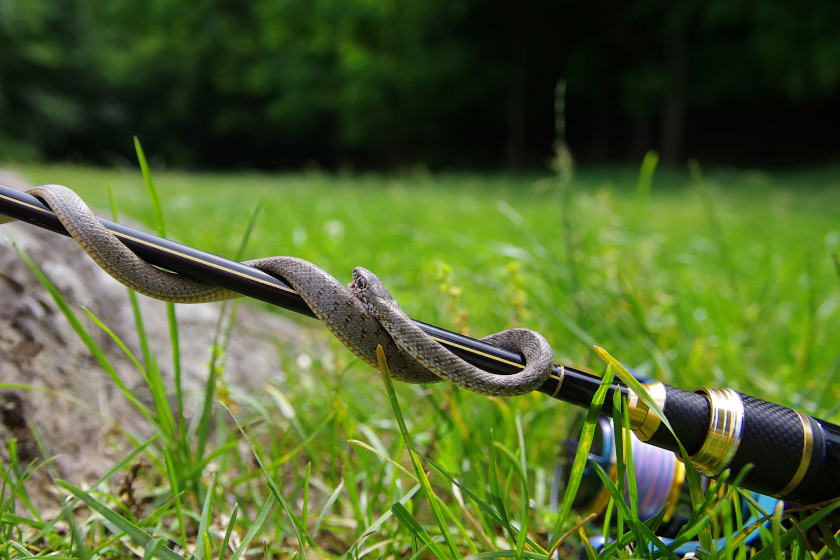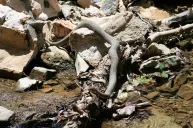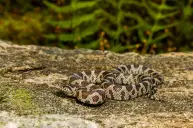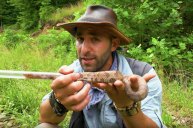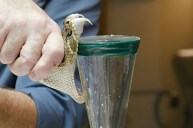As with so many circumstances in our beloved passions - hunting, fishing, hiking, and camping - things happen before we know it. Sometimes, these things can catch us off guard. Encountering a venomous snake is a good example, and knowing how to react and what to do is important. While we're not trying to discourage anyone from fishing in snake territory, we would like to shed a little light on what you can do to protect yourself.
Hazards exist, especially in the wild places we like to recreate. If you know the right information and understand the proper actions to take, a snake encounter doesn't have to put a damper on a day of fishing.
Venomous Snakes Commonly Found Near Water
Not all water snakes are venomous, although some will still aggressively bite an angler if cornered or threatened. The main venomous snakes to be concerned about are as follows:
- Cottonmouth/Water Moccasin
- Copperhead
- Eastern Diamondback Rattlesnake
- Coral Snake
Of the species listed here, only the cottonmouth, which is known as a semi-aquatic viper, is most commonly found in marshes, swamps, warmer streams, and lakes in southeastern states. You may find the others near interior or coastal waters in their range, too.
Equip Yourself With Venomous Snake Knowledge
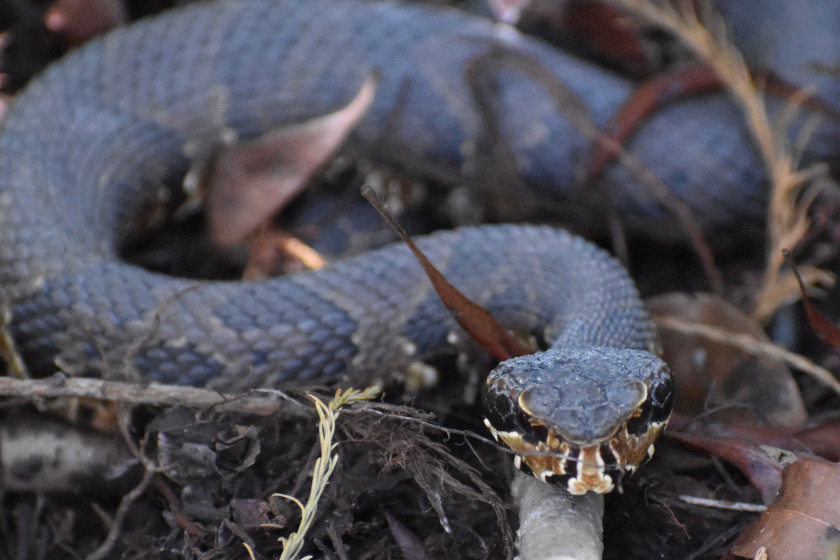
Getty Images: Rodney Rampersad
Dedicated fishermen will go anywhere and do anything to get their fix. The issue is that they may have to pass into some snake-friendly environs to get some casts in.
In such a case, anglers should stay vigilant and remember these best practices:
- Stay aware of your surroundings, not just your lure
- Acquire good snake identification skills
- Never reach into dark, hidden holes or under leaves, rocks, or logs
- Wear anti-snake appropriate gear
- Know the emergency numbers to call and locations to go should they be needed
- Contact your state department of natural resources for more information about snakes in your area
When walking to and from a pond or river, stay on well-used trails that have a good line of sight. If you'll be walking through tall grass or around wood piles, consider protective gear like chaps or snake-proof boots. Turn these things into habits each time you venture into venomous snake country, not just when fishing.
In addition, you should avoid walking in the water under overhanging trees. If you get a lure or fly snagged in a tree, look closely at the branches before you retrieve it.
Venomous Snake Habitat
As the Savannah River Ecology Laboratory (SREL) tells us, "Cottonmouths can be found during the day or night, but forage primarily after dark during the hotter parts of the season," and that "They can be found in nearly all freshwater habitats but are most common in cypress swamps, river floodplains, and heavily-vegetated wetlands."
Cottonmouths don't generally climb into the trees, but can at times be found on low-lying branches to ambush their prey.
In the coastal plain regions, copperheads are most abundant in lowland hardwood forest and swampy areas. Since copperheads have very good camouflage, they're particularly hard to spot.
The eastern diamondback rattlesnake is the largest of the North American rattlesnakes and the most heavy-bodied, but it isn't considered a water snake. "They generally avoid wet areas but sometimes live along the edges of swamps," says the SREL.
The eastern coral snake is found in and around the southern coastal plains from North Carolina to Louisiana, including all of Florida where they are the most common. Coral snakes remain mostly underground and often do not appear until after dark to hunt.
Other Considerations
Knowing the species of snakes in your home area is one thing, but if you plan to fish in unfamiliar territory, using that state's wildlife conservation department's website can go a long way towards helping to understand and avoid snake-related problems in the areas you want to fish.
Remember, there are many common non-venomous snakes (like the garter snake) that are a natural part of the ecosystem and are virtually harmless. Being able to identify them is the first order of business. When it doubt, leave it alone and walk away.
Snakes shouldn't keep you from fishing in an area you've been dreaming about, but you still need to be able to conduct the proper procedures to keep yourself safe.
Looking for a new way to display those antler sheds? Go to Rack Hub and use the coupon code Craiger. Be sure to follow my webpage, or on Facebook and YouTube.
READ MORE: SNAKES IN VIRGINIA: ALL THE SPECIES YOU'LL FIND IN THE STATE
